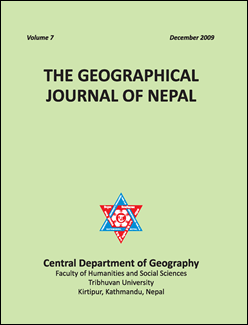Livelihood Patterns of Majhi and Kumal Communities in the Arun Valley, Eastern Nepal
DOI:
https://doi.org/10.3126/gjn.v7i0.17437Keywords:
Kumal Community, Marginalized communities, MajhiAbstract
The present paper is an attempt to portray the livelihood patterns of two marginalized communities such as Majhi and Kumal of Kumaltar village in the Arun valley, eastern Nepal. Data were collected from all 28 households of both communities. The findings show that agriculture and livestock now are the main occupations for their living. Prior to these, ferrying, fishing and pottering were their traditional occupations when they moved to Kumaltar in several years ago. As the production from agriculture and livestock is inadequate, other activities such as mobile trading of merchandise goods and local goods, pig and poultry farming, bamboo and ropes making, and local grains based country alcohol making have been adopted by them as alternative strategies for sustaining their livelihood. In addition, recently, the youths of these communities have migrated to different parts within the country, as well as in foreign countries for employment for better living in the village.
The Geographical Journal of Nepal, Vol. 7, 2009: 7-14
Downloads
Downloads
Published
How to Cite
Issue
Section
License
© Authors




